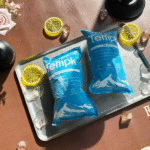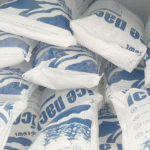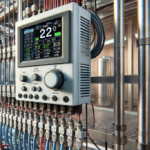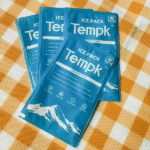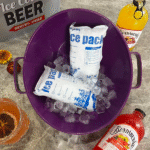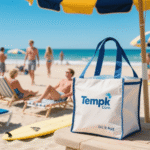When you need to ship fresh produce, frozen meals or life saving vaccines across continents, you can’t leave their safety to chance. Cold chain shipping containers—also called reefer containers—provide a portable, temperature controlled environment that preserves product quality from factory to customer. Analysts estimate the global reefer container fleet market will grow from USD 2.06 milliards en 2025 à USD 3.05 milliards 2031, reflecting the critical role these containers play in global commerce. As e commerce, pharmaceuticals and food exports expand, understanding these specialized containers becomes essential. This guide explains how cold chain shipping containers work, pourquoi ils comptent 2025, and how you can leverage them to protect your goods and grow your business.

What defines a cold chain shipping container and how do different container types compare?
Why are refrigerated containers essential for global trade and the cold chain industry?
How do smart containers and IoT technology enhance efficiency and traceability?
What challenges and costs accompany the use of reefer containers—and how can you address them?
What are the latest trends for 2025, y compris la durabilité, automation and direct to consumer delivery?
How can you optimize your cold chain shipping operations to reduce waste and ensure compliance?
What Is a Cold Chain Shipping Container and How Does It Work?
Cold chain shipping containers, commonly known as conteneurs frigorifiques, are portable units equipped with built in refrigeration systems. They maintain a consistent temperature range—from –30 °C to +30 °C—allowing you to transport temperature sensitive goods such as fruit, viande, fruit de mer, produits pharmaceutiques et chimiques. Unlike static cold storage facilities, these mobile units can move seamlessly across ships, trains and trucks. Their flexibility supports multi modal logistics, enabling you to deliver products from producer to retailer without breaking the cold chain.
Key Features and Types
Reefer containers come in various sizes and configurations to suit different cargo volumes and temperature requirements:
20 Foot Standard Reefer: Ideal for small loads or specialized products, this container can handle short distance deliveries or smaller shipments. It fits easily onto trucks and railcars.
40 Foot High Cube Reefer: Provides ample space for large shipments and supports dual temperature zones. High cube models offer extra height for bulkier goods or pallets.
Super Freezer Units: Designed for ultra low temperatures (down to –60 °C) to ship tuna, ice cream or pharmaceutical products requiring extreme cold.
Dual Temperature Containers: Partitioned units that allow multiple temperature zones within a single container, useful for mixed loads like meat and dairy or different stages of frozen products.
Reefer containers use insulated walls and roofs to minimize heat transfer. A refrigeration unit mounted at one end circulates chilled air through the cargo space. Temperature sensors continuously monitor the interior environment, and data is logged for compliance and traceability. Power can come from on board generators, plug ins at port terminals or integrated batteries during intermodal transfer.
Step by Step: How a Reefer Container Operates
Pre cool the cargo: Avant le chargement, goods are pre cooled or frozen to the desired temperature. This minimizes thermal shock and ensures the container can quickly reach target conditions.
Load and set temperature: Cargo is loaded carefully to allow air circulation. Operators set the desired temperature and humidity using the control panel. An automatic defrost cycle prevents ice build up.
Surveiller en transit: Built in sensors monitor temperature, humidity and door status. Data is transmitted to fleet managers or customers via satellite or cellular connectivity.
Power management: During sea transit, containers plug into a vessel’s power grid. On trucks, diesel generator sets provide power. Newer models use battery packs for short runs, réduire les émissions.
Unload and record: Upon arrival, data logs provide proof that temperature requirements were maintained throughout the journey. This traceability supports compliance with food safety and pharmaceutical regulations.
Tableau 1: Reefer Container Types and Uses
| Type de conteneur | Utilisation typique | Range/Capacity | Signification pratique pour vous |
| 20′ Reefer | Petites charges, specialty items | 20 ft length; 28–33 m³ | Fits into tight spaces; ideal for urban deliveries or high value goods |
| 40′ High Cube Reefer | Expéditions en vrac, dual temp | 40 ft length; 65–76 m³ | Handles large volumes; extra height improves stacking and efficiency |
| Super Freezer | Thon, glace, biotechnologie | Ultra low temp (–60 °C) | Keeps ultra sensitive products stable; often used in pharma and seafood |
| Dual Temp Reefer | Cargaison mixte (viande & laitier) | Deux zones (Par exemple, –20 ° C & +5 °C) | Saves space by consolidating loads; simplifies logistics for multiple products |
Conseils pratiques pour les utilisateurs
Choisissez la bonne taille: A 20 foot unit may suffice for niche products or last mile deliveries, while 40 foot containers suit bulk exports. Oversizing increases costs and energy consumption.
Pre cool cargo properly: Start with goods already at the target temperature to reduce the refrigeration load and maintain quality.
Monitor airflow: Leave space between pallets and walls to allow even air distribution. Avoid blocking the front wall where cold air enters.
Utiliser des enregistreurs de données: Record temperature and humidity continuously for compliance and quality assurance.
Plan power sources: Confirm plug in availability at ports and arrange backup generators for land transport. Consider battery powered units for emission regulations.
Exemple de cas: A seafood exporter in Alaska used dual temperature reefers to ship salmon (frozen at –18 °C) and fresh crab (chilled at 2 °C) in one container, reducing shipping costs by 30% and cutting transit time by consolidating shipments. Real time monitoring allowed the exporter to adjust refrigeration settings mid voyage to maintain quality.
Why Are Cold Chain Shipping Containers Essential for Global Trade?
Reefer containers underpin the modern cold chain because they enable global trade in perishable and temperature sensitive goods. International trade in perishable food exceeded 740 million metric tons in 2023, et 90% of vaccine shipments require cold chain logistics. Without refrigerated containers, a significant portion of this trade would be impossible or uneconomical.
Drivers of Demand
Growing Middle Class and Diet Shifts: As incomes rise, consumers demand year round access to fresh fruits, légumes, dairy and meat. This drives imports and exports between hemispheres and seasons. Reefer containers preserve quality during long sea voyages.
Pharmaceutical Boom: Biologics and vaccines must remain within strict temperature ranges to maintain efficacy. Governments and health organizations rely on cold chain containers to ship vaccines globally, especially after the COVID 19 pandemic highlighted vulnerabilities in supply chains.
E Commerce and Direct to Consumer Models: The rise of online grocery and meal delivery services increases demand for fast, reliable cold chain logistics. Cold chain containers support hub and spoke models where goods move from farms or factories to regional distribution centers before final delivery.
Conformité réglementaire: Agencies worldwide enforce strict temperature monitoring and documentation for perishable goods. The Food Safety Modernization Act (FSMA) in the U.S. and similar regulations in the EU require proof that products were kept within safe temperatures throughout transit. Reefer containers provide built in data logging and remote monitoring to meet these requirements.
Benefits of Using Reefer Containers
Integrity and Quality: Controlled temperatures prevent spoilage, extend shelf life and reduce waste. This is especially crucial for high value products such as seafood, tropical fruit and pharmaceuticals.
Flexibilité: Containers can be transported by sea, rail, truck or air, supporting multimodal logistics. They’re self contained, meaning you can move them from port to warehouse without offloading goods.
Traçabilité: Integrated sensors track temperature, location and door status. Data logs support compliance audits and recall investigations.
Rentabilité: While reefer containers have higher purchase and operating costs than dry containers, they allow consolidation of shipments and reduce product loss. Dual zone containers reduce the need for multiple shipments.
Évolutivité: As demand for temperature sensitive products grows, you can expand fleets incrementally by adding containers. This flexibility helps businesses adapt to seasonal demand fluctuations and new markets.
Challenges You Should Be Aware Of
Despite their advantages, cold chain containers present hurdles:
High operating costs: Reefer containers can consume 4–5.8 kW per hour (96–139 kWh par jour) to maintain temperatures. Energy makes up 35–45 % of total operating costs for reefer operations. Rising electricity and fuel prices put pressure on margins.
Capital investment: Purchasing or leasing a reefer container is significantly more expensive than a dry container. In some markets, prices for reefer trailers have increased 40–50% due to inflation and regulatory requirements.
Limites des infrastructures: Many ports in developing countries lack sufficient plug in points and storage facilities. Only about 38% of secondary ports can support large numbers of reefers simultaneously.
Complexité réglementaire: Cross border trade requires multiple certifications and compliance checks. A single refrigerated shipment can require 12–15 separate documents, increasing administrative costs and risk of delays.
Impact environnemental: Traditional diesel powered generators emit greenhouse gases. Meeting international emissions targets requires adopting cleaner technologies.
Understanding these challenges enables you to plan effectively and invest in appropriate solutions, which we explore later in this article.
How Do Smart Containers and IoT Enhance Efficiency and Traceability?
Modern cold chain shipping containers aren’t just insulated boxes; they’re sophisticated systems that leverage digital technologies to improve performance and visibility.
Smart Container Basics
UN smart container is a standard shipping container equipped with sensors and communication devices that transmit real time data. Sensors record location, température, humidity and other conditions. Data flows to a secure cloud platform where algorithms detect anomalies and trigger alerts. Operators and customers can view this data on dashboards, enabling proactive decisions.
According to Hapag Lloyd, smart containers provide visibility and control, rationaliser les opérations, soutenir les objectifs de développement durable, améliorer la satisfaction du client, ensure traceability and enable data driven decisions. These benefits directly address the challenges of cold chain logistics.
Key Technologies in Smart Reefer Containers
Capteurs IoT: Internet enabled devices capture temperature, humidité, shock and door status. They broadcast data via cellular, satellite or low power wide area networks.
GPS and Location Tracking: Real time location data helps you monitor routes, predict arrival times and reroute shipments around disruptions.
Machine Learning and AI: Algorithms analyze data to detect patterns, predict equipment failures and optimize energy use. Predictive maintenance reduces downtime by up to 40%.
Blockchain Integration: Sécurisé, tamper proof ledgers track container conditions and chain of custody. This technology simplifies compliance audits and reduces fraud.
Smart Reefer Controls: Automated systems adjust temperature and airflow based on sensor feedback, maintaining precise conditions even when ambient temperatures fluctuate.
Adoption Trends
Industry analysts estimate that by 2026, 25 % of containers worldwide will be equipped with IoT devices, and the number of smart reefer containers could increase sixfold to more than 10 million. This rapid adoption stems from the clear value proposition: improved cargo security, reduced spoilage and enhanced regulatory compliance.
Practical Benefits for You
Visibilité en temps réel: You can track shipments from origin to destination, reducing anxiety and enabling proactive interventions. Customers appreciate transparency, and this builds trust.
Reduced Waste and Spoilage: Sensors detect temperature deviations instantly. Alerts prompt drivers or operators to take corrective action, preventing product loss.
Efficacité énergétique: Smart systems optimize refrigeration cycles, using data to adjust compressor speed and defrost cycles. IoT enabled monitoring can cut energy consumption by 20–40% compared to older units.
Maintenance prédictive: Machine learning models identify equipment wear and predict failures before they happen. Scheduling maintenance proactively reduces downtime and extends asset lifespan.
Compliance Simplified: Automated data logging ensures you have the documentation needed for FSMA, PIB (Bonnes pratiques de distribution) et autres réglementations. Blockchain verification provides tamper proof records.
Exemple de cas: A pharmaceutical distributor adopted smart reefer containers to ship vaccines across Europe. Temperature logs, GPS data and blockchain records provided continuous proof of compliance. When a sensor detected a slight temperature spike, the system alerted the driver to investigate. The issue—a blocked air vent—was resolved quickly, saving thousands of doses and demonstrating how technology can prevent costly spoilage.
Challenges of Using Cold Chain Containers and How to Overcome Them
While cold chain containers offer many advantages, they also present significant hurdles. Understanding these barriers helps you implement strategies to mitigate them.
High Energy Consumption and Operational Costs
Reefer containers require consistent electricity to maintain set temperatures. Older models consume between 4 kW and 5.8 kW per hour (96–139 kWh par jour). High energy costs reduce profitability and increase carbon emissions. Newer units with variable speed compressors and better insulation consume 20–40 % less energy, but the initial purchase price can be higher.
How to Address It:
Invest in Energy Efficient Technology: When leasing or purchasing containers, prioritize models with variable speed compressors, efficient fans and high performance insulation. Au fil du temps, reduced energy costs offset higher upfront expenses.
Use Renewable Power: Solar panels integrated into container roofs or port infrastructure can supply electricity during idle periods. Battery powered refrigeration units are emerging as a clean alternative.
Optimize Loads and Routes: Properly loading cargo and planning efficient routes reduces the work the refrigeration unit must do. AI route planning can reduce idle time and energy use.
Infrastructure Limitations at Ports
Many ports lack sufficient plug in points or cold storage space to handle large volumes of reefer containers. This creates bottlenecks and delays. According to market analysis, 62 % of secondary ports in developing countries cannot support simultaneous plug ins for more than 150 conteneurs frigorifiques.
How to Address It:
Planifier à l'avance: Coordinate with port operators to reserve plug in slots and ensure power availability. Arrive during off peak times to avoid congestion.
Use Battery Assisted Units: Battery powered reefers can maintain temperature for up to 72 heures sans alimentation externe, reducing dependence on port infrastructure.
Advocate for Infrastructure Investments: Collaborate with industry associations to encourage government and private sector investment in cold chain infrastructure.
Regulatory and Documentation Complexity
Refrigerated shipments often require 12–15 separate certifications for each destination. Inconsistent regulations across countries complicate compliance. FSMA 204 in the U.S. extends recordkeeping requirements, while the EU and Asia have their own standards.
How to Address It:
Streamline Documentation: Adopt software that automates paperwork and integrates with customs systems. Blockchain can store required documentation securely and share it with authorities as needed.
Restez informé: La réglementation évolue. Subscribe to industry newsletters and attend webinars from regulatory bodies to keep up with changes.
Collaborez avec des experts: Work with freight forwarders and legal advisors who specialize in cold chain compliance.
High Upfront Costs and Limited Access for Small Businesses
Reefer containers are significantly more expensive than standard containers. Leasing costs can strain small businesses, and lenders may require collateral.
How to Address It:
Lease Instead of Buy: Leasing offers flexibility and reduces capital expenditure. Lease agreements often include maintenance and upgrades.
Consider Shared Cargo: Consolidate shipments with other businesses to maximize container capacity and share costs.
Look for Government Incentives: Many governments offer grants or loans for businesses investing in cold chain infrastructure, particularly in food and pharmaceutical sectors.
Skilled Labor Shortage
Operating and maintaining reefer containers requires trained technicians and drivers. Dans de nombreuses régions, labor shortages pose challenges.
How to Address It:
Formez votre équipe: Invest in training programs for technicians and drivers. Cross train staff to handle multiple roles, ensuring coverage during absences.
Leverage Automation: Use remote monitoring and automated control systems to reduce the need for constant manual oversight. Predictive maintenance reduces emergency repairs.
Outsource When Necessary: Partner with specialized service providers for maintenance and emergency support.
How to Optimize Your Cold Chain Shipping Operations
To get the most out of your cold chain containers, Suivez ces meilleures pratiques.
1. Match Container Type to Cargo
Different products require different temperatures and container features. Frozen goods need super freezer units, while fresh produce can ride in standard chilled containers. Dual zone containers let you transport diverse goods together. Always assess your cargo’s temperature requirements and choose the appropriate container size.
2. Plan and Monitor Loads Carefully
Even Loading: Distribute cargo evenly to maintain airflow. Avoid over packing and ensure there’s space at the top and sides for air circulation.
Emballage sécurisé: Use pallets and straps to prevent shifting during transit. Any movement can block airflow or damage goods.
Regular Checks: Conduct pre departure inspections to verify refrigeration unit function, sensor calibration and proper settings.
3. Use Technology to Gain Visibility
Install IoT Sensors: Surveiller la température, humidité, vibration and door status in real time. Look for devices that transmit data via satellite or cellular networks.
Employ Fleet Management Software: Platforms that aggregate data from containers, trucks and vessels help you manage routes, predict arrival times and detect anomalies.
Integrate Blockchain: Pour les expéditions pharmaceutiques, blockchain provides immutable records that regulators can audit, ensuring compliance with Good Distribution Practices.
4. Optimize Energy Use
Load Pre cooled Goods: Cooling goods before loading reduces the refrigeration unit’s workload.
Schedule Defrost Cycles: Automated defrosting prevents ice build up without manual intervention.
Leverage Predictive Analytics: Machine learning models analyze energy usage patterns and recommend optimal settings to balance temperature stability and energy savings.
5. Ensure Regulatory Compliance
Maintain Proper Documentation: Digitally store all required certificates and temperature logs. FSMA 204 demands that you can produce records within 24 hours upon request.
Stay Up to Date: Regulations change. Regularly review updates from FDA, Ema, USDA and other regulatory bodies.
Former le personnel: Ensure your team understands compliance requirements and knows how to use monitoring tools effectively.
6. Build Resilience Into Your Supply Chain
Plan for Disruptions: Create contingency plans for power outages, equipment failure and port congestion.
Diversify Routes: Use multiple shipping lanes and carriers to mitigate delays due to port closures or weather.
Collaborate: Work closely with suppliers, carriers and customers to align expectations and share information.
Exemple de cas: A meal kit company serving the U.S. market used a combination of 20 foot and 40 foot reefer containers to ship perishable ingredients from farms to fulfillment centers. By integrating IoT sensors and AI based route planning, the company reduced spoilage by 18% and cut fuel consumption by 12%. They also implemented a customer portal where recipients could see real time shipment status, increasing satisfaction and trust.
What Are the Key Trends for 2025 in Cold Chain Shipping Containers?
L'industrie de la chaîne du froid évolue rapidement. Here are the top trends shaping cold chain shipping containers in 2025 et au-delà.
1. E Commerce and Direct to Consumer Growth
Online grocery, meal kit and pharmaceutical deliveries are booming. Consumers expect fresh or frozen products to arrive quickly and safely. Reefer containers play a critical role in regional distribution networks, enabling companies to manage supply surges and deliver higher quality goods.
2. Sustainable Solutions and Alternative Energy
Environmental concerns and regulatory pressure are pushing the industry toward greener technologies. Businesses are adopting battery powered and solar assisted reefer containers that can operate autonomously for up to 72 heures. Research into hydrogen fuel cell containers offers prospects for zero emission shipping. Natural refrigerants like carbon dioxide and ammonia reduce global warming potential compared with conventional refrigerants.
3. IoT and Smart Technology Proliferation
The adoption of smart containers is accelerating. Capteurs IoT, machine learning and blockchain provide transparency and control. Avec 25 % of containers expected to be IoT enabled by 2026, digital transformation is no longer optional.
4. Automatisation et robotique
Automated ports and warehouses use robotic cranes, automated guided vehicles and computerized inventory systems to handle containers more efficiently. Smart reefer containers integrate seamlessly with these environments, enabling fully automated plug in and data exchange.
5. Modular and Multi Compartment Containers
Innovations in container design include multi compartment units that allow multiple temperature zones in one container. This flexibility cuts costs and simplifies logistics. Expect to see more containers with adjustable partitions and integrated sensors for each compartment.
6. Regulatory and Traceability Evolution
Governments worldwide are strengthening food safety and pharmaceutical regulations. FSMA 204 in the U.S. requires detailed recordkeeping and fast data retrieval, while the EU’s General Food Law mandates traceability. Smart containers and blockchain technologies help meet these demands by providing instant access to tamper proof records.
7. Emergence of Green Financing and Incentives
Institutions are offering green loans and subsidies for businesses that adopt energy efficient and eco friendly technologies. Investing in sustainable reefers can unlock funding opportunities and improve brand reputation.
Market Insights Snapshot
Market Size: The reefer container fleet market is projected to grow from USD 2.06 milliards en 2025 à USD 3.05 milliards 2031, à un 6.5 % TCAC.
Smart Container Adoption: IoT devices will equip about 25 % of containers by 2026.
Efficacité énergétique: New models consume 20–40% less energy than decade old containers.
E Commerce: Rapid growth in direct to consumer deliveries is increasing demand for flexible, small scale reefer solutions.
Investissement dans les infrastructures: Asia Pacific is leading reefer container deployments, driven by government investments and rising middle class demand.
These trends illustrate the industry’s move toward sustainability, digitalization and customer centric solutions. Adapting to them will help you stay competitive.
Questions fréquemment posées
Q1: How do I choose between a 20 foot and 40 foot reefer container?
Choose a 20 foot container for smaller loads or when space is limited—ideal for regional deliveries or high value cargo. Opt for a 40 foot high cube reefer when you need more capacity, such as bulk exports or when transporting mixed products that require dual temperature zones. Ensure your cargo fits within weight and volume limits, and consider loading flexibility.
Q2: How long can a reefer container maintain temperature without power?
Standard reefers rely on external power or onboard generators. Cependant, modern battery powered units can operate autonomously for up to 72 hours without a plug in. Always plan transit routes around available power sources and invest in battery assisted containers if you frequently encounter port delays or remote destinations.
Q3: What is the energy consumption of a reefer container?
Energy use varies by size, ambient conditions and technology. Older units consume about 4–5,8 kW par heure (96–139 kWh par jour). Newer models with variable speed compressors and better insulation use 20–40% less energy. Proper loading, pre cooling and smart monitoring further reduce consumption.
Q4: Are smart containers secure and privacy friendly?
Oui. Smart containers use encrypted communication protocols and secure cloud platforms to protect data. Access can be restricted to authorized users. Blockchain integration ensures tamper proof records. Regular audits and software updates keep systems secure.
Q5: How do regulations impact cold chain containers?
Réglementations telles que FSMA 204 require detailed temperature logs and fast data retrieval. EU regulations emphasize traceability and quick recall capabilities. Reefer containers equipped with sensors and data loggers help you comply. Always verify that your containers meet specific standards for your industry and destination.
Q6: Can cold chain shipping containers be used for non food items?
Absolument. Reefer containers are used to transport pharmaceuticals, produits chimiques, fleurs, fine art and even temperature sensitive electronics. Any product requiring a controlled environment benefits from cold chain shipping.
Résumé & Recommandations
Cold chain shipping containers are the unsung heroes of global trade, enabling the safe transport of food, pharmaceuticals and other temperature sensitive goods. À ce jour 2025, the reefer container market is booming, projected to grow from USD 2.06 milliard à USD 3.05 milliards 2031. This growth is driven by rising consumer expectations for fresh products, expanding pharmaceutical distribution and the surge in e commerce. Entre-temps, technologies intelligentes, eco friendly designs and regulatory changes are reshaping how containers operate and integrate into the supply chain.
To capitalize on these trends, tu devrais:
Select the right container for your product and ensure proper loading and pre cooling.
Adopt smart container technology to gain real time visibility, improve energy efficiency and simplify compliance.
Invest in energy efficient and sustainable units—including battery powered or solar assisted models—to reduce operating costs and emissions.
Stay informed on regulations and trends like FSMA 204 and emerging traceability requirements.
Collaborate with reliable partners who understand cold chain logistics and can provide end to end support.
En suivant ces recommandations, you can reduce waste, protect your products, meet customer expectations and stay ahead in a rapidly evolving industry.
À propos du tempk
Le tempk est un principal fournisseur de solutions de chaîne du froid, specializing in innovative shipping containers and monitoring systems. We design energy efficient reefer containers with advanced insulation, natural refrigerants and battery assisted power to help you meet sustainability goals. Our IoT platform offers real time tracking and predictive analytics to ensure your cargo stays safe and compliant. Avec plus 15 années d'expérience, we serve industries ranging from food and beverage to pharmaceuticals and chemicals. Our mission is to help you protect product integrity, reduce energy consumption and simplify regulatory compliance. Contactez nos experts to explore how Tempk can support your cold chain shipping needs.
















